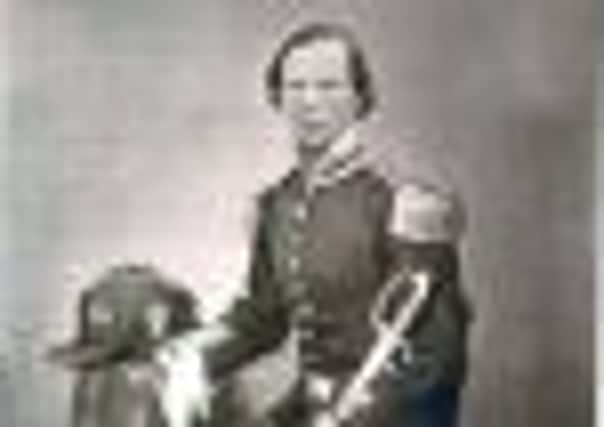A hero of the American Civil War born and raised in Edinburgh


Now 150 years after he was killed in action, amateur historians Billy Buchanan and Malcolm Nicol have been working to re-tell the remarkable story.
They have uncovered a never before seen picture of Col Smith, who served with the Mississippi Rifles, and was killed in action during the Battle of Munfordville.
Advertisement
Hide AdAdvertisement
Hide AdAnd after attending a battle re-enactment and festival in Mississippi last month, they held a ceremony at Col Smith’s memorial in Edinburgh yesterday.
Born in 1836, Robert Smith followed his brother, businessman James, from Edinburgh to Jackson, Mississippi.
He was enlisted in the Confederate Army and elected colonel of the 10th Mississippi infantry in 1860.
His death came after he was ordered to capture a vital bridge during the battle – he was mortally wounded and in great pain until he died several days later,. He was buried in a Jackson cemetery at the age of 26 and is regarded as a folk hero by Confederate sympathisers in the southern states of America.
Billy said: “Smith was highly thought of as a young man who committed himself to Mississippi. One of his first orders was to take president of the Confederate States, Jefferson Davis, to Montgomery, Alabama, where he gave his inauguration speech at the first White House of the Confederacy.
“At the age of 26, he was already a colonel. After achieving so much by then, who knows what he would have gone on to do.”
Billy and Malcom, who are Falkirk councillors, attended the Smith Memorial in the Victorian Dean Cemetery yesterday where two flags – of the Mississippi and Scottish varieties – flowers, and an original Confederate kepi hat were placed.
Explaining his interest, Billy, who has written a number of historical books and was given the new picture of Col Smith by American researchers on his last visit, said: “One of my ancestors was one of the first workers at James Smith’s foundry in Bonnybridge, which was apparently sending cannon over to the Southern States.
Advertisement
Hide AdAdvertisement
Hide Ad“We believe our ancestor went over to the Civil War and never came back.”
James went on to erect three monuments in his brother’s memory – at Greenwood Cemetery in Mississippi, Dean Cemetery in Edinburgh and another in Kentucky, which is registered on the National Register of Historic Places and is the second biggest in America. Billy is determined to restore the Dean Cemetery memorial, which famously mispelled the name of the battle as ‘Mumfordsville’.
“I was quite disappointed at the state of disrepair the monument has fallen into, the inscription can hardly be read – I’m going to launch a fund so that it can be repaired and the inscription read once more.”
• The American Civil War, which ran from 1861 to 1865, emerged amid tension over the rights of states against federal authority, westward expansion and slavery.
Led by Abraham Lincoln, the Republican Party campaigned against expanding slavery beyond the states in which it already existed in the presidential election of 1860. After a Republican victory, 11 southern slave states declared their withdrawal from the United States and formed the Confederate States of America – the Confederacy.
The other 25 states supported the federal government – the Union.
Hostilities began in 1861 with Confederate forces, led by Confederate President Jefferson Davis, firing on a US military installation in South Carolina.
Four years later, Confederate general Robert E Lee surrendered his army after the military campaign became untenable. Six days later, Abraham Lincoln was assassinated by Confederate sympathiser John Wilkes Booth.